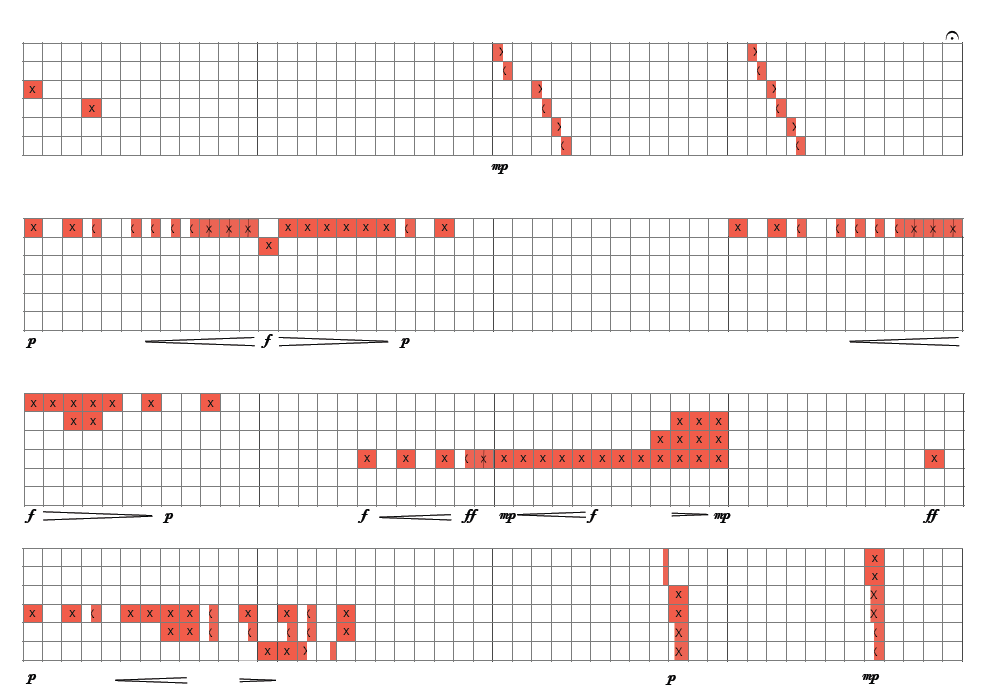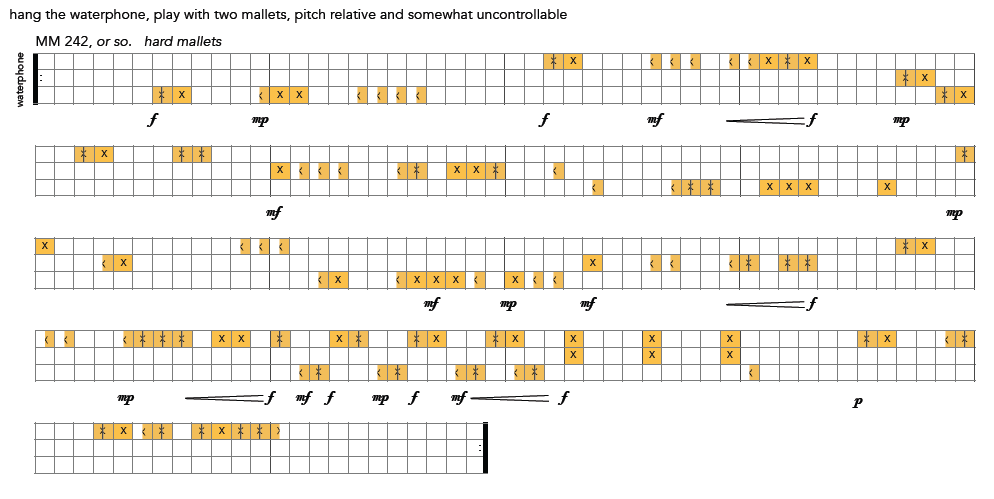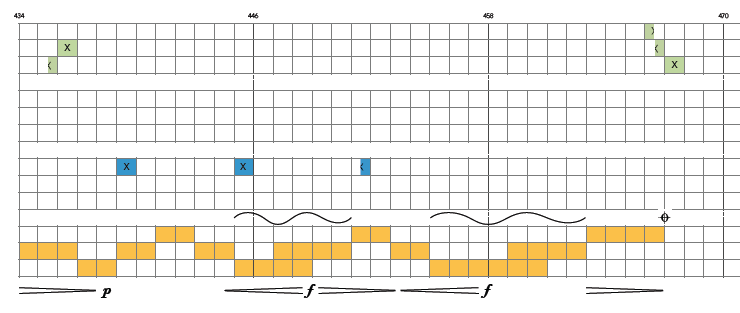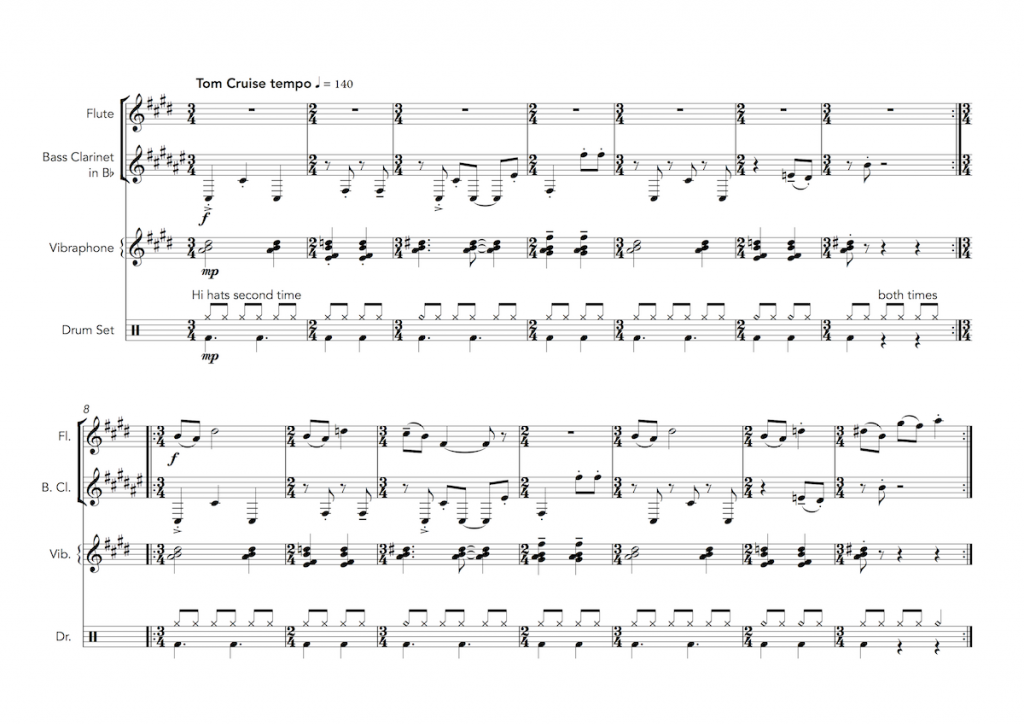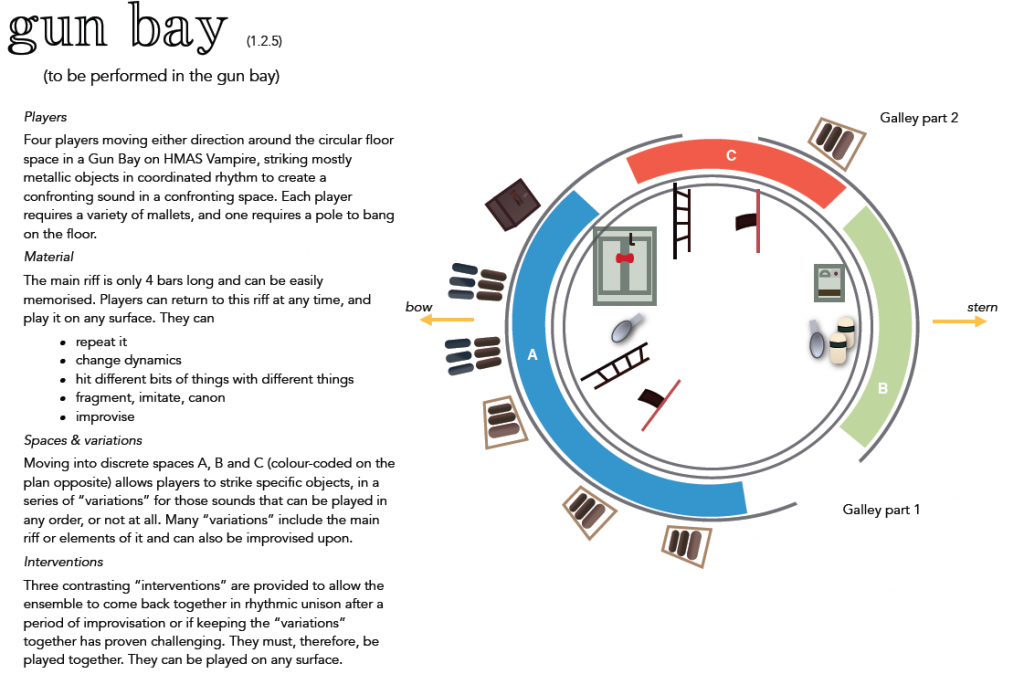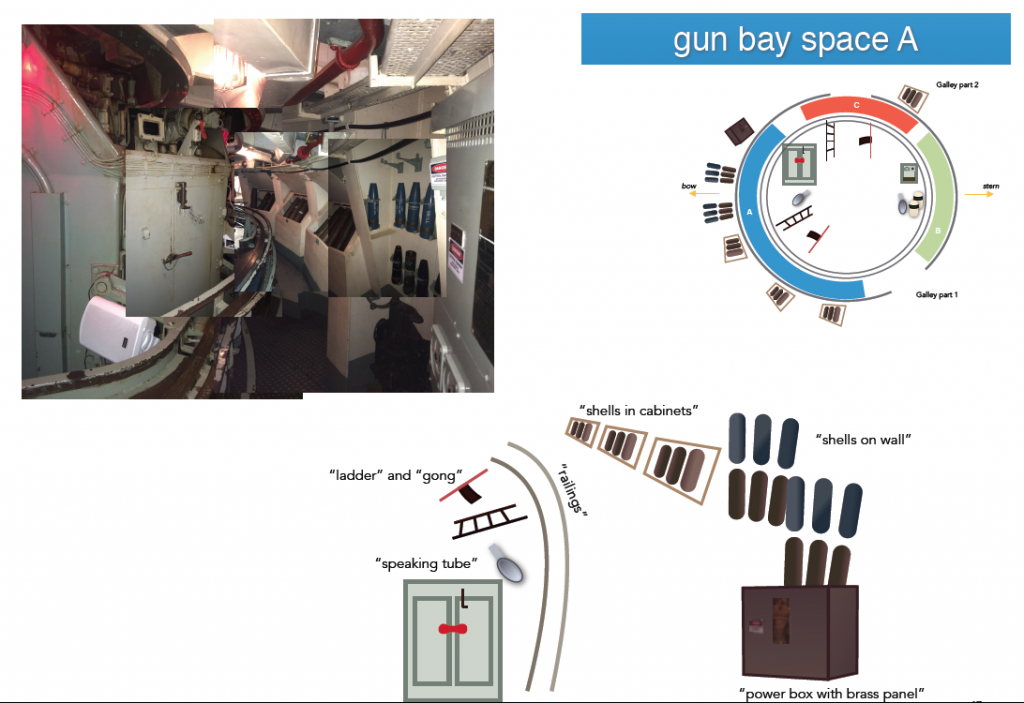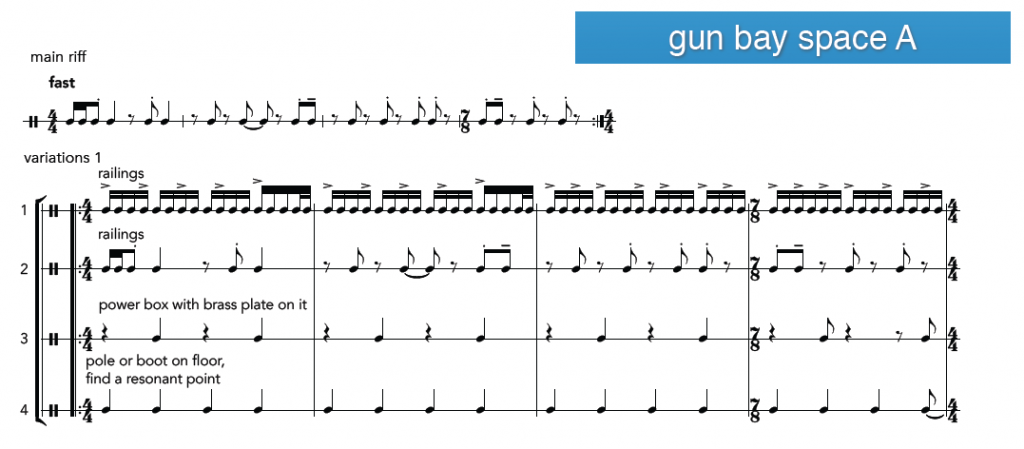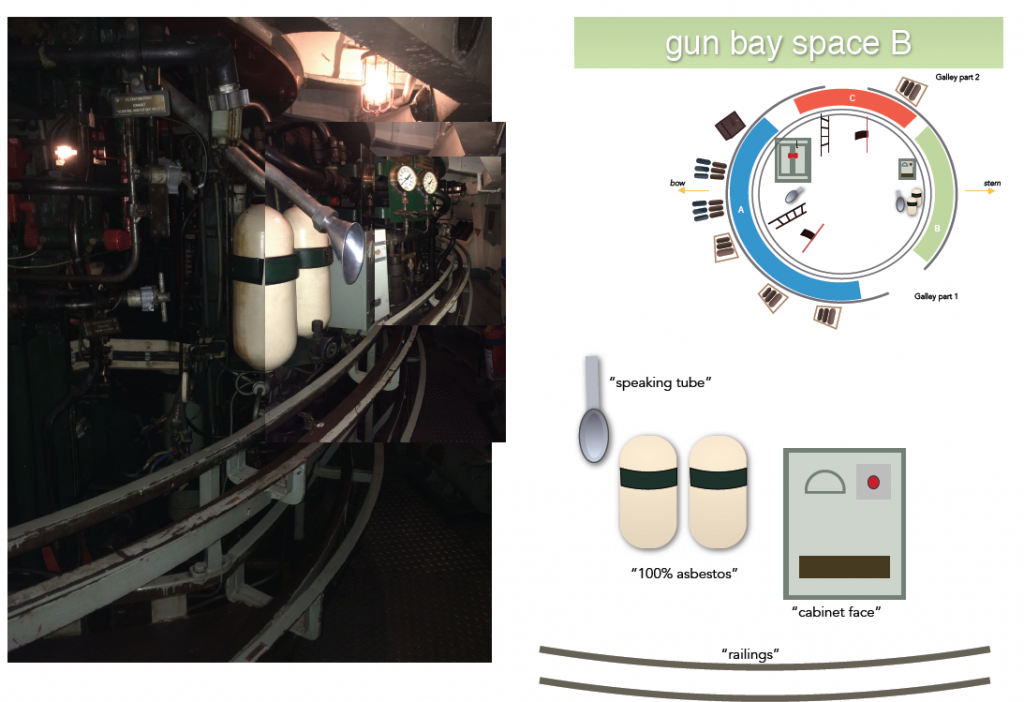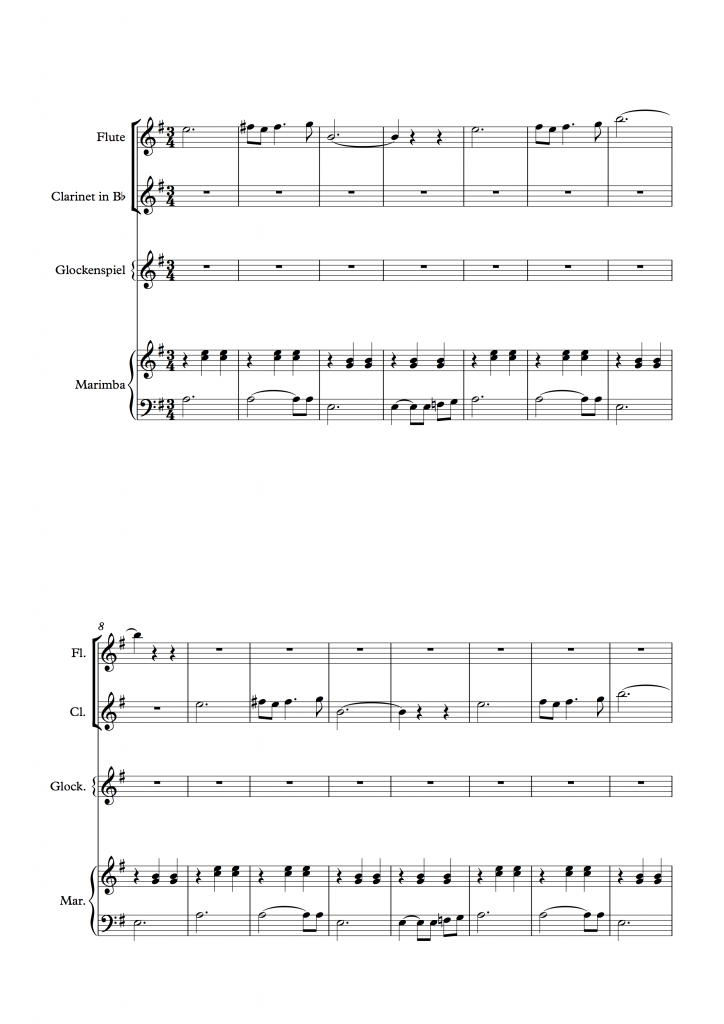The crew of HMAS Onslow are at action stations. Sonar pings the submarine, which must move both quickly and as silently as possible. The act of real Noise Husbandry happens here, in the only musical content of the installation on HMAS Onslow which itself is blurred and atmospheric. This piece will set the scene for a game where visitors have to quietly explore the submarine to find clues to solve a puzzle. Too much noise, and the sonar locates them, and the clues disappear.
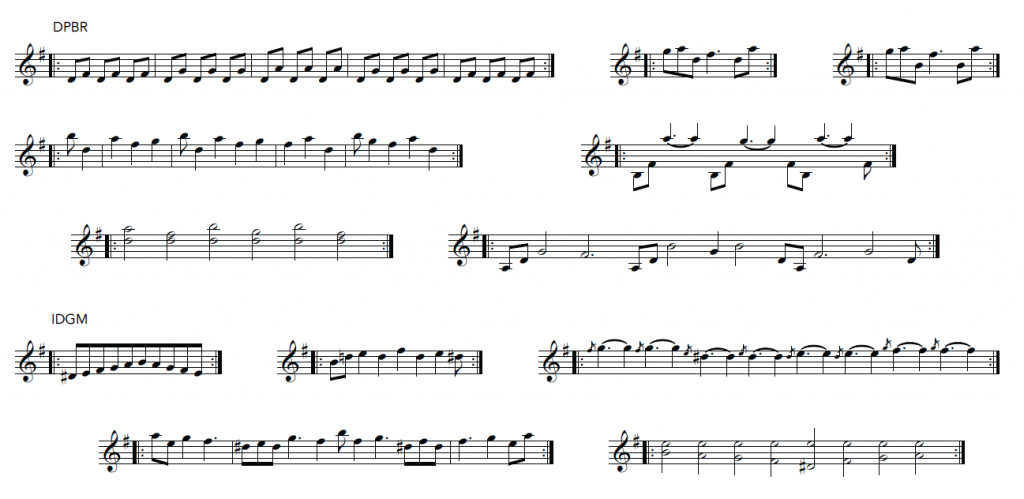
There are three collections of material, marked CABN-E, DPBR and IDGM. Each collection uses a slightly different collection of pitches. These do not need to be thought of as “sections”, they are only marked because choosing to play in the same collection or choosing to play in different collections, and making the decision to change from one to another may have an exact affect on the listener. Here’s a mock-up, though the piece will sound different every time it is performed…
The work is open, and can be performed for as long or as short a time as is required. Players do not need to play at all “in time” with one another – even the two vibraphone parts which have definite pulse. Each piece of musical material is palindromic – it would sound the same performed backward as forward, at least to one musical extent. Performers could choose a palindromic progression through their material, if they like, but this also isn’t necessary.
Again, the pitches for the ostinati were drawn from several songs on the playlist, but I’m sure you can’t tell which…

